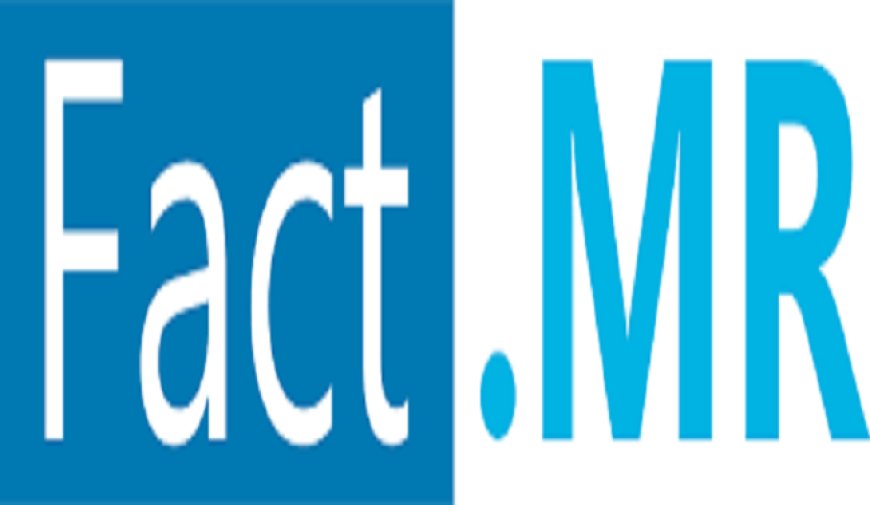Growth in Maxillofacial Surgeries Boosting Bioresorbable Polymers Demand
The bioresorbable polymers market was valued at US$ 1.3 billion in 2021 and is expected to reach US$ 6.2 billion by 2032, growing at a compound annual growth rate (CAGR) of 15.8% during the forecast period from 2022 to 2032.

The bioresorbable polymers market was valued at US$ 1.3 billion in 2021 and is expected to reach US$ 6.2 billion by 2032, growing at a compound annual growth rate (CAGR) of 15.8% during the forecast period from 2022 to 2032.
The bioresorbable polymers market has witnessed significant growth in recent years, driven by advancements in materials science and the increasing demand for innovative solutions in the medical field. Bioresorbable polymers are biodegradable materials that can break down in the body over time without leaving any toxic residue. These materials are primarily used in the production of medical devices such as sutures, drug delivery systems, and stents, where they provide temporary support during the healing process and naturally degrade once their function is complete. The rising global focus on healthcare, combined with an aging population and an increasing preference for minimally invasive surgeries, has fueled the adoption of bioresorbable polymers in the medical and healthcare sectors.
One of the key factors driving the growth of the bioresorbable polymers market is the growing demand for minimally invasive procedures. With the increasing number of surgeries that require biodegradable implants, bioresorbable polymers offer a viable solution to avoid the need for a second surgery to remove implants. Additionally, the development of bioresorbable polymers with enhanced mechanical properties has expanded their application range, leading to new opportunities for the market.
Want Full Report? Enquire Here-https://www.factmr.com/report/bioresorbable-polymers-market
Market Insights
Bioresorbable polymers are derived from renewable sources such as natural biopolymers, including polylactic acid (PLA), polycaprolactone (PCL), and polyglycolic acid (PGA). These polymers are designed to degrade safely within the human body, providing temporary support for tissues and organs while eliminating the need for further medical interventions. The growing emphasis on sustainable and eco-friendly materials has spurred interest in bioresorbable polymers in industries outside of healthcare as well, including the packaging and agricultural sectors.
In the medical field, bioresorbable polymers are used in a variety of applications, ranging from sutures, bone fixation devices, and vascular stents, to drug delivery systems. For example, bioresorbable sutures are used to close wounds without the need for removal, and bioresorbable stents support blood vessels after surgery before naturally dissolving over time. These materials are also increasingly being used in the development of drug delivery systems that allow controlled release of medication, enhancing the effectiveness of treatments while minimizing side effects.
The medical industry continues to be the largest end-user of bioresorbable polymers, with increasing demand for these materials in orthopedic, cardiovascular, and tissue engineering applications. The growing number of surgeries and the push for more patient-friendly, less invasive solutions have contributed to the expansion of the bioresorbable polymers market.
List of Key Companies Profiled in The Report
- Corbion N V
- Evonik Industries AG
- Poly-Med, Inc.
- KLS Martin Group
- Foster Corporation
- Ashland Global Holdings Inc
- Others
Recent Industry News
Recent industry news has highlighted several key developments in the bioresorbable polymers market. Companies are increasingly focused on enhancing the properties of bioresorbable polymers to meet the growing demand for more efficient and functional materials. Advances in 3D printing technology have enabled the creation of customized bioresorbable implants and devices, further expanding the scope of their applications.
Additionally, there has been significant progress in the use of bioresorbable polymers in drug delivery systems. Researchers are exploring new ways to incorporate bioresorbable polymers into advanced drug delivery technologies, such as nanoparticle carriers and microcapsules, which offer controlled release of drugs and better therapeutic outcomes. These developments are poised to drive further growth in the market, especially in areas like cancer treatment and chronic disease management.
Furthermore, regulatory approvals for bioresorbable devices have been progressing in various regions, which is expected to increase the adoption of these materials in clinical settings. As more healthcare providers recognize the benefits of bioresorbable polymers, the market is likely to see greater integration of these materials into everyday medical practice.
Competitive Analysis
Recent developments by key providers in the bioresorbable polymers market include:
In March 2021, Ashland Global Holdings Inc. expanded its production plant for the Viatel bioresorbable polymer and relocated its research and development (R&D) activities from Dublin to the National Science Park in Mullingar.
In September 2020, Corbion and Total announced plans to build a new polylactic acid (PLA) bioplastics plant in Europe. Set to be the first global-scale PLA production facility in Europe, the plant will have an estimated capacity of 100 thousand tonnes per year. Slated to open in 2024, the facility will be located in France, helping to boost lactic acid production and meet the rising demand for bioresorbable polymers.












